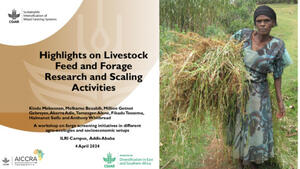
Reconciling food-for-work project feasibility with food aid targeting in Tigray, Ethiopia
Abstract
Food-for-work (FFW) projects face the challenge of addressing three kinds of objectives: to feed hungry people, to build public works where needed, and to be feasible for prompt project implementation. In the debate over how to target FFW to the poorest of the poor, the last two program objectives are often overlooked. This research examines FFW afforestation and erosion-control programs in central Tigray, Ethiopia, during 1992-95 in order to understand how these sometimes conflicting objectives were reconciled. Statistical analyses examined the factors that influenced (1) in which villages FFW projects were located, (2) which households were deemed eligible to participate in FFW (in those villages having FFW projects), and (3) which eligible households elected to participate, and (4) how much time the participating households dedicated to FFW activities. Project feasibility outweighed the needs for food security or natural resource conservation in influencing whether an FFW project would be located in one of the 25 villages surveyed. In villages where FFW was available, anti-poverty targeting appears to be taking place, since smaller households with less land were more likely to be eligible to participate in FFW projects. But although the poor were likely to be eligible for FFW, some non-poor households were also eligible, which suggests that anti-poverty targeting was not efficient, Among households eligible for FFW, those that were relatively better off (larger families that did not lease outland) tended to participate and supply more days of FFW labor than the poorest households. The only households eligible for FFW which did not participate were headed mostly by elderly women and hence unable (rather than unwilling) to participate. Overall, anti-poverty targeting was sub-optimal but reasonable, considering that these resource conservation projects need to be located where labor and materials could be made available.
Citation
Food Policy;26(1): 85-95










